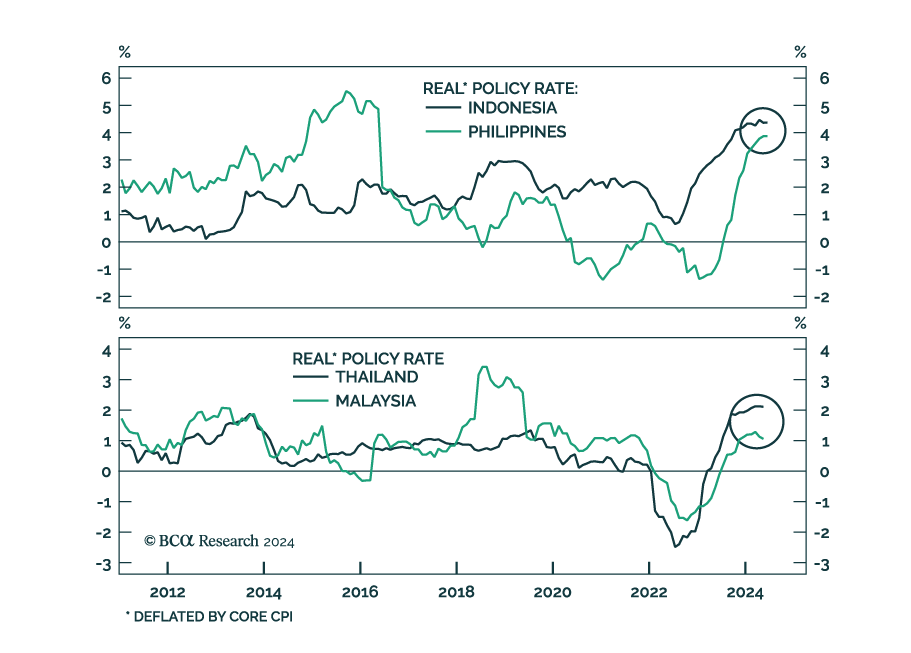What’s Ailing ASEAN Markets?
The four ASEAN stock markets (Indonesia, Malaysia, Thailand, and the Philippines) have fallen in absolute terms over the past year despite the powerful rally in the developed markets. They have also underperformed their EM benchmark.

Our Emerging Markets strategists posit that ASEAN stocks and currencies have more downside. High real interest rates, tight fiscal stances, and export downturns ail all of these markets.
Inflation has fallen rapidly in these economies and has been below 2% since early this year. Yet the ASEAN central banks have not cut policy rates as they face a dilemma over their depreciating currencies. All four currencies have weakened significantly over the past three years versus the US dollar.
As a result, real policy rates have surged to well above pre-pandemic levels in three of the four economies. Correspondingly, real borrowing costs have also risen sharply, discouraging credit demand and origination. Adding to the woes, fiscal thrust has been negative in all four economies over the past two years.
Looking ahead, stock prices will remain vulnerable and the rupiah and the peso will likely continue to fall as export fragility persists and capital inflows are unlikely to rise. One reason for the latter is that the ASEAN nominal interest rate differential with the US has fallen to record lows. Another reason is ASEAN corporate earnings growth has been weaker than that of the US, as capital tends to gravitate where the return on capital is relatively higher and/or rising.